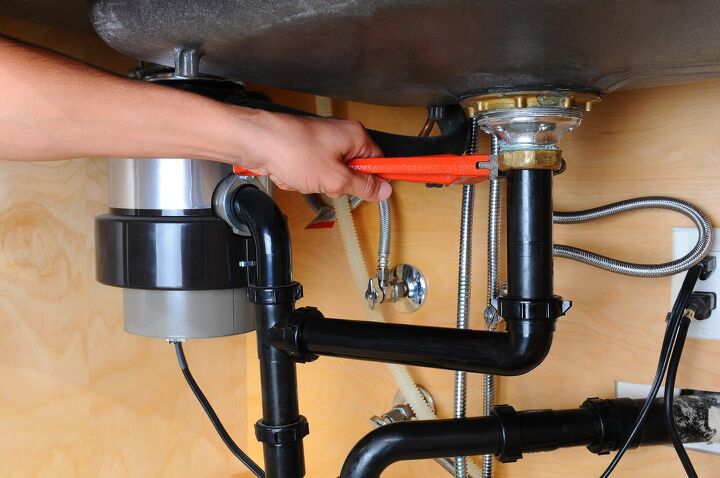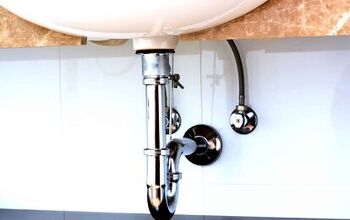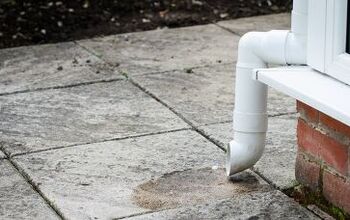What Is the Size of PVC Pipe Used for Kitchen Sink Drains?

The last thing that you want to do is install the wrong size pipes for your sink drain. Incompatibility between a drain outlet and a pipe can lead to clogs, leaks, and expensive repairs. So, what size pipe do you need for a sink drain?
The standard pipe size for a bathroom sink drain is 1 ¼”, but 1 ½” diameter pipes are common as well. Kitchen sinks require a 3 ½” drainpipe because of the wide outlet so that you can quickly drain water and food waste. Install schedule 40 PVC pipes for kitchen and bathroom sinks because chemicals and hot water won’t damage them.
Hire a plumber if you are unsure so that you can comply with local building codes. You also may live in one of 35 states that adheres to the International Plumbing Code. Follow along as we explore what size pipe you need for your sink drain.
Bathroom Sink Drain Pipe Size
The standard size pipe for a sink drain is 1 ½”, but 1 ¼” pipes are suitable for some drains as well. You can measure the outlet on your sink drain to see what kind of pipe you should fit into it. Outlets typically measure 1 ½”, but they can measure closer to 1 ¾”, but that is more common for showers.
You likely need a 1 ¼” diameter pipe if you have an older home that still has the original plumbing. Older drains typically measure 1 ¼” in diameter, but that can restrict the flow of water. Plumbers eventually made the switch to 1 ½” pipes and outlets for sink drains because it allows water to flow faster.
It is possible to install a wide pipe for a narrow drain outlet if you use an adapter. However, you won’t get as fast of water flow if you install a 1 ½” pipe to a 1 ¼” drain outlet even with an adapter.
What Size Pipe for Kitchen Sink Drain?
The standard size pipe for a kitchen sink drain is 3 ½”. Builder-owners typically use schedule 40 PVC for kitchen sink drainpipes as well because of the durability. Kitchen sink drains require a larger pipe than a bathroom sink to accommodate the water needs.
Food waste is another important factor, and a 1 ¼”-1 ½” pipe wouldn’t be enough to drain it. Modern kitchen sinks universally measure 3 ½” in diameter for the most part. Plumbers and builders found that this diameter is enough to drain both water and food waste.
However, it is still inadvisable to put food waste directly down your kitchen sink drain, even with a garbage disposal. Sure, a 3 ½” diameter is wide, but it is easy for food like noodles, rice, and meat scraps to clump together. Luckily, PVC drainpipes are easy to unclog with a drain snake or auger in e
Kitchen Sink Drain Size Code
It is ideal to hire a plumber to install a kitchen sink drainpipe so that you comply with local building codes. International Plumbing Code is just as important and it currently applies to 35 states. The most important rule is that your kitchen sink drain measures the standard 3 ½” diameter.
However, building codes stipulate that the minimum diameter for a kitchen sink pipe to carry water away is 4”. The extra-wide diameter for wastewater pipes is so that you can quickly remove waste to send to the sewer or septic tank. Besides that, you simply need to make sure that the P-trap underneath your kitchen sink is level to comply with local building and plumbing codes.
Do Kitchen Sinks Need a Vent?
You need to vent a kitchen sink to alleviate pressure, prevent clogs, and protect the pipes. Bathroom sinks need to be vented as well otherwise the P-trap won’t work properly and it will empty. P-traps in both kitchen and bathroom sinks can quickly lose their water without a vent.
This will cause sewer odors to escape from the sink drain and into the room. The vent allows the negative pressure within the pipes and drains to even out to ensure healthy water flow. Improper venting can cause your sink to back up and create a mess.
Venting is also necessary with toilets, and building codes require that you vent them. Sewer gases are harmful, smell bad, and will fill the air in your bathroom or kitchen if you fail to vent your sink.
What Type of Pipe is Used for a Sink Drain?
Plumbers use PVC pipes sink drains of how durable it is. It is easy to unclog PVC pipes and you won’t have to worry about rust and corrosion. You generally find schedule 40 PVC in drainpipes because it can handle both hot and cold water without trouble.
Other varieties of PVC, such as schedule 80, aren’t ideal for sink drains because hot water can damage them. Some homeowners install CVPC pipes for their sink drain, but standard PVC is ideal. That is because CPVC is sensitive to chemicals that you commonly rinse down a sink drain, such as certain lotions, soaps, and moisturizers.
Summing It Up
You need a 3 ½” diameter pipe for a kitchen sink drain so it can handle food waste and water. Bathroom sink drain outlets are smaller and require a 1 ¼”-1 ½” pipe to drain water. PVC pipes are the best option for both kitchen and bathroom sink drains because of how durable they are.
Never install schedule 80 PVC drainpipes because hot water and chemicals can easily damage them. You need to use schedule 40 PVC pipes because they can withstand high temperatures and chemical exposure. That is especially important for bathroom sinks where you are likely to use products such as moisturizer and lotion which contain chemicals.
Make sure that your sink drain and pipes comply with local building codes. Check to see if you live in one of 35 states that complies with the International Plumbing Code before installation. Otherwise, you will fail to pass an inspection if and when you sell your home in the future.
Related Guides

Nick Durante is a professional writer with a primary focus on home improvement. When he is not writing about home improvement or taking on projects around the house, he likes to read and create art. He is always looking towards the newest trends in home improvement.
More by Nick Durante














![10 Best Electric Lawn Mowers - [2022 Reviews & Top Rated Models]](https://cdn-fastly.upgradedhome.com/media/2023/07/31/9070486/10-best-electric-lawn-mowers-2022-reviews-top-rated-models.jpg?size=350x220)












![12 Washing Machine Brands to Avoid [with Recall Data]](https://cdn-fastly.upgradedhome.com/media/2023/07/31/9075781/12-washing-machine-brands-to-avoid-with-recall-data.jpg?size=350x220)